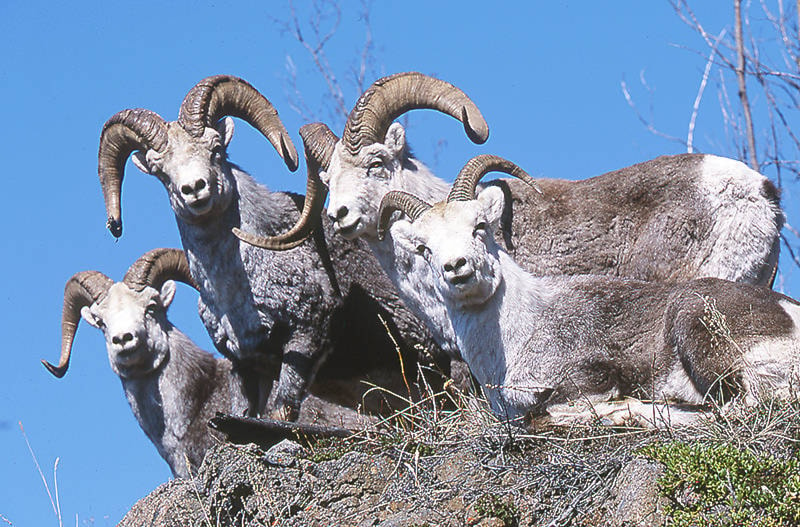Despite providing an expert witness, a B.C. hunter lost an appeal to have the ram he shot returned to him after it was confiscated during an inspection.
The debate was all about age of the ram. Mackenzie Crawford shot a thinhorn mountain sheep, believing it to be full-curl, or a ram over eight years of age, as required by law. However, during a compulsory inspection the ram was deemed to be around seven years of age and was confiscated.
ALSO READ: Peninsula crime fighters need more volunteers
Crawford was hunting for the sheep, also know as a Stone’s sheep, in 2016, near Crehan Creek in Omineca-Peace, northern B.C.
In court, Crawford was supported by Dr. Valerius Geist, an expert with over 60 years of experience, who was convinced the sheep was over 9 years old.
The disagreement stems from how Stone’s sheep ages are estimated.
Hunting regulations formed to meet the requirements of the Wildlife Act 1996, look for “true horn annuli,” which in layman’s terms means a full set of curled horns. Much like the rings of a tree, a series of gnarled horn sections can demonstrate how many years the ram has been alive. The question is: does each sheep produce a full section every year or do environmental factors slow or speed the growth of the sections?
Geist holds a PhD in Zoology, and has decades of experience studying populations of thinhorn sheep, which produced four books. Now retired, he formerly taught at the University of Calgary for 27 years and mentored BC Fish and Wildlife employees in correctly aging sheep.
ALSO READ: Guns could use smartphone-style fingerprint locks in near future
In court, Geist said there are significant differences between populations of high mountain sheep and lower level groups, due to food abundance and other factors, such as fertilizer pollution. Additionally, he opined that in this specific case the ram had lost 6 to 7 inches of early horn growth due to “brooming,” or parts of the horn snapping off due to wear and tear.
Geist said the ram was from a northern population known for low body and horn growth and, like a person’s shoe size, using statistical averages was irrelevant in judging the age of sheep. He gave data examples showing rams with 13 inches of difference in their horn growth.
William Jex, a Regional Wildlife Biologist with the Ministry of Forests, Lands, Natural Resource Operations & Rural Development was called as the Crown’s witness. Holding a diploma, he is a Registered Professional Biologist, with many years experience and is the province’s lead on thinhorn sheep and manages inspectors.
The court observed of Jex, “He said that in his professional view the Crawford ram had seven annuli [horn sections] and that was the extent of it. He was firm in his opinion that the Crawford ram was under eight years when it was taken.”
ALSO READ: Victoria hits top three in B.C.’s rattiest cities
Jex cited his department’s use of more modern studies, tooth age analysis and X-rays, although the judge noted he had no formal training in interpreting X-rays. He did provide extensive data sets and graphs from his department’s records and reported the plaintiff had not submitted an incisor tooth for analysis, failing to add to the required burden of proof.
The final judgement said it was “not a straight-forward exercise” due to the experts’ profound disagreements but ruled against Crawford, stating the failure to submit the incisor tooth had added to the judge’s view he had not established “on a balance of probabilities” the ram was eight years old.
nick.murray@peninsulanewsreview.com
Like us on Facebook and follow us on Twitter
